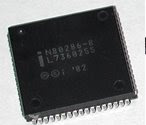Structure
With a little exception, most remarkably the sponges, animals have bodies differentiated into split tissues. These comprise muscles, which are talented to contract and control locomotion, and a nervous system, which sends and processes signals. There is also naturally an internal digestive chamber, with one or two openings. Animals with this sort of association are called metazoans when the former is used for animals in common.
All animals have eukaryotic cells, enclosed by a characteristic extra cellular matrix collected of collagen and stretchy glycoproteins. This may be calcified to form structures like shells, bones, and spicules. Throughout development it forms a comparatively flexible framework upon which cells can move about and be rationalized, making complex structures possible. In contrast, other multicellular organisms like plants and fungi have cells detained in place by cell walls, and so expand by progressive growth. Also, unique to animal cells are the next intercellular junctions: tight junctions, gap junctions, and desmosomes.
Monday, November 27, 2006
Wednesday, November 08, 2006
Stonehenge 3 VI
Two further rings of pits were dug outside the outermost sarsen circle, called the Y and Z Holes. The Z holes were about 2m outside the outermost sarsen circle and the Y holes about 5m further out. These were each of thirty pits and each seems to match with one of the uprights in the outer sarsen circle. They were never filled with stones however and were permitted to silt up over the next few centuries; their upper fills contain Iron Age and Roman material. Monument building at Stonehenge appears to have ended around 1600 BC.
Two further rings of pits were dug outside the outermost sarsen circle, called the Y and Z Holes. The Z holes were about 2m outside the outermost sarsen circle and the Y holes about 5m further out. These were each of thirty pits and each seems to match with one of the uprights in the outer sarsen circle. They were never filled with stones however and were permitted to silt up over the next few centuries; their upper fills contain Iron Age and Roman material. Monument building at Stonehenge appears to have ended around 1600 BC.
Subscribe to:
Posts (Atom)




